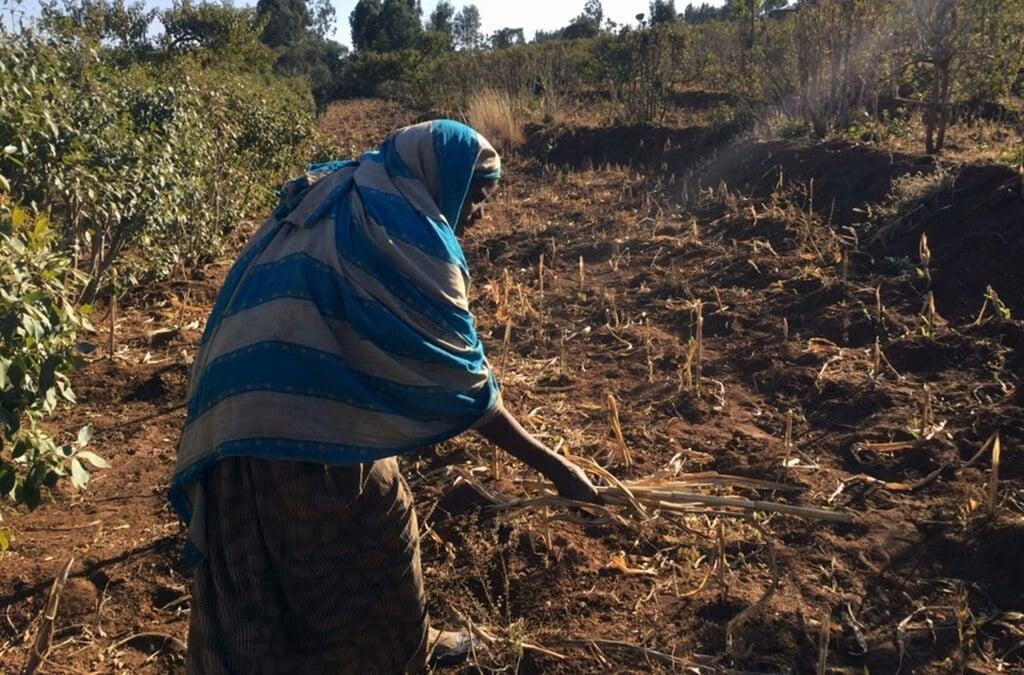Africa-Press – Ethiopia. Addis Abeba — Residents of East Hararghe Zone in eastern Ethiopia say that their crops have withered following two consecutive failed rainy seasons, leading to widespread crop loss. The Famine Early Warning Systems Network (FEWS NET) has warned that the ongoing drought could expose communities in the area to severe food shortages by early 2026.
Ahmed Abdulle, a resident of Suula kebele in Babille district, told Addis Standard that all his crops have been destroyed. “Everything I planted on my farmland dried up because of the drought,” he said, adding that livestock are also facing feed shortages. “There has been almost no rain this year. The crops I sowed dried after sprouting, and even the few that reached the fruiting stage were consumed by birds. Now our animals are starving,” he added.
Another farmer in the Babille district told Addis Standard that both the Belg and Meher rains failed. “I planted sorghum twice, but both times the crops were lost,” he said. Ahmed, who cultivated sorghum on two hectares and ground nuts on one hectare, said he ended up “empty-handed.”
Abiy Ababa, a resident of Babille town, said farmers in surrounding rural kebeles have also suffered total crop loss due to the drought. “There has been no proper rainfall throughout the year, and farmers are facing serious difficulties,” he said.
The FEWS NET issued a report in late October 2025, warning that poor rainfall during two consecutive rainy seasons has worsened drought conditions across eastern Ethiopia.
The report cautioned that areas such as East Hararghe’s lowlands could face IPC Phase 4 (emergency-level) food insecurity by early 2026.
FEWS NET further noted that many families with low or no income are already struggling to access food, and the situation is expected to deteriorate further in the coming months.
Ahmed Abdulle, father of seven, said the situation in his community is becoming unbearable. “For now, we are surviving on what little was left from last year’s harvest,” he said, expressing concern about the months ahead. He added that local authorities have informed residents that they have requested emergency assistance through the Productive Safety Net Program (PSNP).
Local officials confirmed the drought’s impact. Abdi Ahmed, Head of the East Hararghe Zone Agriculture Office, told Addis Standard that rainfall shortages have been severe across districts including Babille, Fadis, Mekenisa Oromo, Midhaga, Moyo, Goloda, and Kumbi. “In Babille and Fadis, which are major farming areas, the damage is extensive,” he said.
The agriculture office is currently assessing the losses to determine the full extent of crop damage. Abdi added that government agencies, including PSNP, are monitoring the situation to prevent further harm to affected households.
To mitigate the impact, the regional government has distributed livestock feed to more than 49,000 low-income households, whose animals are at risk due to feed shortages.
FEWS NET also warned that the effects of the drought could persist until May 2026, compounding the hardship of communities in eastern and southeastern Ethiopia who were previously affected by the 2020–2023 drought which killed more than three million livestock. In May 2022 Addis Standard reported the 8 woredas were affected by the drought in the East Hararghe zone.
For More News And Analysis About Ethiopia Follow Africa-Press






